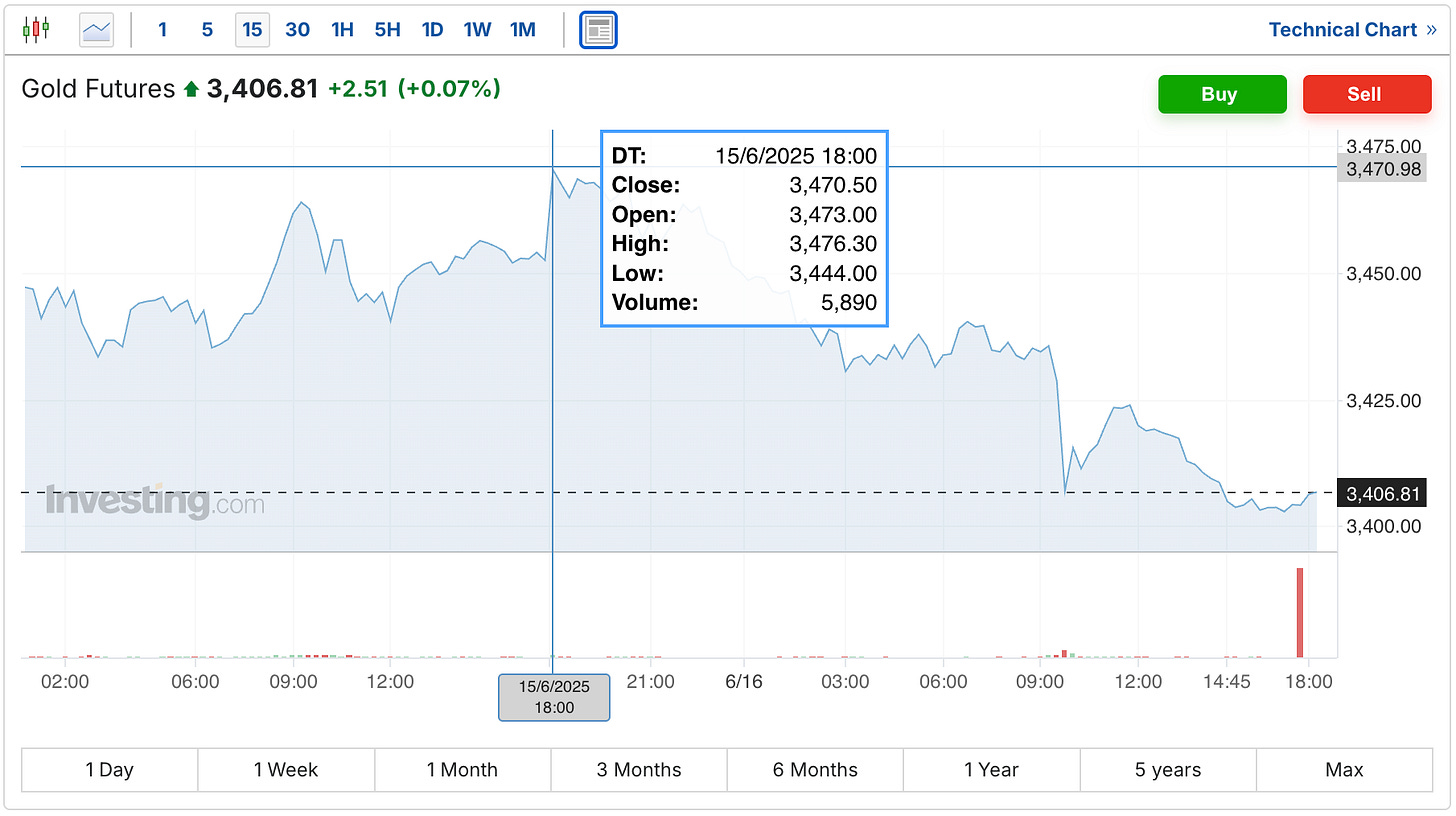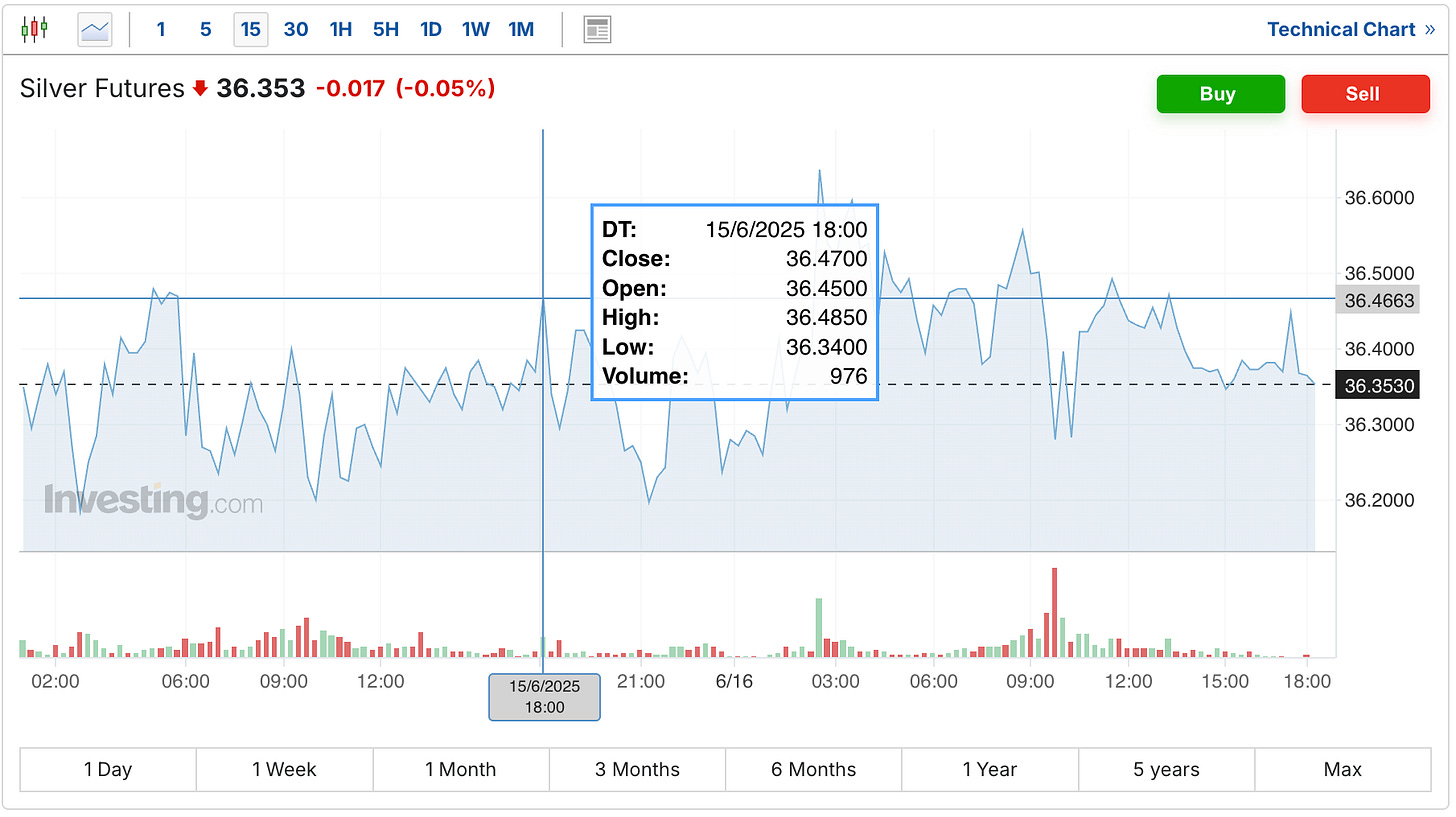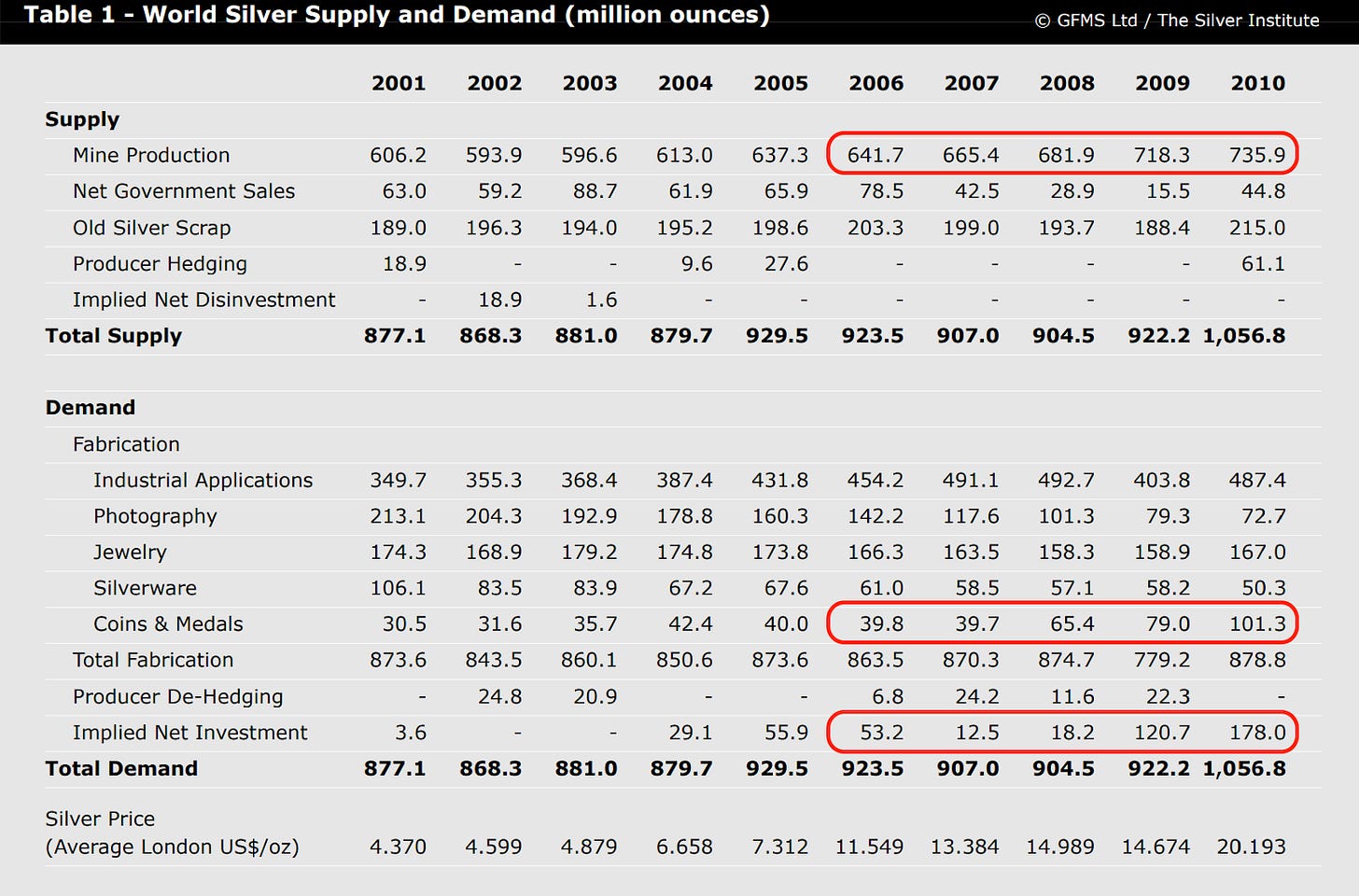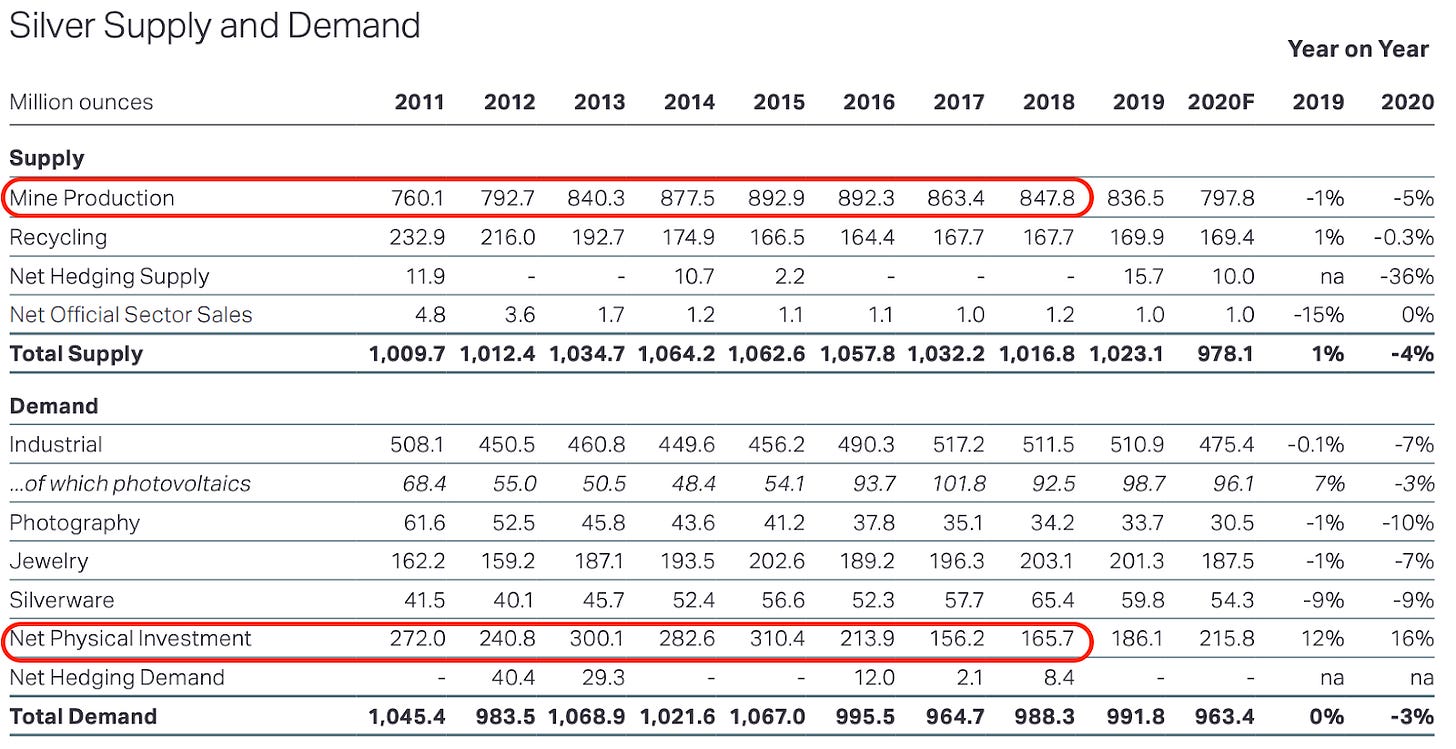Why The Silver Price Declined During A Decade Of QE And 0% Interest Rates

Image Source: Pixabay
The gold and silver futures were down to start the new trading week, with gold taking the harder hit on Monday, currently down $64 from the Sunday night open.
Meanwhile the silver futures are down a dime from the Sunday open.
However for today’s report, I’d like to share an excerpt from the upcoming silver report that I’ve almost finished writing. Which I like to think touches on the key topics on the mind of today’s silver investor.
So for today’s column, I’d like to take a look at what’s one of the biggest frustrations, especially for many of the older silver investors. Which is how despite a decade of quantitative easing and 0% interest rates in the US after the silver price hit $49 in 2011, the price largely declined throughout most of that period.
And with silver still carrying its reputation as an inflation hedge, many investors were left wondering why the silver price sat in the teens for most of the 2010s decade.
It's a question that’s pondered, yet rarely answered. But it's an important one, that deserves to be put in proper context.
Perhaps it's understandable that there's so much confusion around this question due to the complexities of how silver’s priced. Which involves an often non-linear balance between physical supply and demand, and the futures trading on the COMEX where the price is set.
Now while one could make a valid argument that there are flaws within the way this system operates, for the sake of getting to the heart of why the price responded like it did in the 2010s, we’ll simply stick to examining the situation as it is.
And at the heart of it, is that despite how the actions of the Federal Reserve or the government do get priced in by the futures markets, what often gets forgotten, is that aside from whether we should be or not, we aren't currently on a silver standard.
So when the Fed comes out and cuts interest rates, or announces more quantitative easing, while that increases the supply of money and credit, there’s not a mathematical or financial law that dictates that the silver price has to match that.
Which would be the case on a silver standard. But 1792 Coinage Act or not, the current currency system isn’t linked to silver right now. And where things get complex, is that monetary actions by the Fed or the government do still normally get reflected in the price set by the futures market.
But in silver, because of the way the pricing system works, as we’ve seen, the connection between the physical and futures markets can often break down. However that doesn’t mean there aren’t some longer-term boundaries and parameters that do eventually come into play, given that there is a physical commodity involved.
To illustrate the point, I'll use an extreme example. And please note, that I am not suggesting a silver price target here, but just using a large number so that the bigger takeaway will be clear.
With that said, imagine that something happens with the Treasury, or some other part of the economy, and the Fed goes back to large amounts of quantitative easing, and cuts rates back to 0%.
Then, let's imagine there was an extreme reaction in the silver market, and the silver price goes to a big number like $250 per ounce.
Let’s say this move to $250 also occurred in a way that led mining executives and capital backers to believe that that was going to be the price going forward, and that it wasn’t going to drop back down (not necessarily the easiest scenario to imagine), and money flowed into the miners and production increased (we’ll also leave the timeline that it would take for that production to come online aside for now as well).
But if we’re not on a silver standard, with a redeemability mechanism in place to support the price and create an additional source of demand for the incremental silver produced, and if people aren’t increasing the rate at which they’re actually buying, taking possession of, and using silver monetarily, then eventually over a long enough time period. you’d be left with an oversupply.
Because while the silver price is generally tracking the gyrations of the Fed and the economy, it also impacts the decisions made by the silver producing executives. And while the price went higher in 2011 in response to what was happening following the collapse of the subprime bubble, and silver demand did increase, especially after the price started coming down, it was a lot more common to hear about physical silver investors who were frustrated and throwing in the towel, rather than a surge by the public to buy physical.
You can see in the data from the older World Silver Surveys how in 2006, they have mine production at 641.7 million ounces, while coins and metals plus net implied investment comes to 93 million ounces.
Then we saw a surge in physical silver investment beginning in 2009, that peaked in 2015 at 310.4 million ounces, but by 2018 was down to 165.7 million ounces.
Meanwhile, by 2018, mine production had increased to 847.8 million ounces. Which means that between 2006 and 2018, mine production increased by 206.1 million ounces, while total investment had increased by 72.7 million ounces.
So ultimately, we ended up with more additional supply than demand after the price rose. Because despite the debasement of the dollar over that period, while there was an increase in demand, it didn’t keep up with the incremental production. And if the silver price goes up, and production is increased, but there isn't a sufficient source of demand to consume that production, over a long enough period of time, you end up with a greater supply, and the price eventually has to come down.
We also talked about how over the past year the gold price has been rallying, and precious metals investors have been wondering when silver is going to catch up. And again, a lot of that has to do with how central banks have been setting records for the amount of gold they've been purchasing, but so far we haven’t seen that incremental source of investment demand in silver, where instead there’s been a lot of selling in the last 2 years.
However the growing industrial demand, especially in the past few years, has been sufficient to overcome that and still leave the market in a deficit. Which means that in the same way a price spike led to an oversupply, now we’re in the exact 180-degree opposite of that situation.
Where the current price has left the market in a shortfall, and it's possible that we could run into a supply issue, even without investment coming back in a big way if the industrial demand continues to grow, or even just stays roughly flat at this point.
Which is just one of the reasons why following the silver market in the next few years will be so intriguing. And given the current dynamics, if we do eventually get a surge of demand from the investment side, that would only further accelerate the rate at which the existing available supply gets eaten into.
So in terms of why the silver price reacted the way it did from 2013 to 2019, even as interest rates stayed at 0%, hopefully this helps to put that into better context.
Because while we’ve seen that the physical/futures relationship can go through long periods where the correlation breaks down, that doesn’t mean that basic fundamentals aren’t still at play.
I did post a video about this on our YouTube channel today, which also examines how this situation will be affected by some of the other dynamics at play in the silver market. So if you’re in the mood to watch something tonight, I think you would enjoy this one.
Video Length: 00:46:38
But that’s enough for today, and we’ll see what the gold and silver markets hold in store for us tomorrow.
More By This Author:
Bank Silver Short Position Falls Just Shy Of All-Time RecordGold Crosses Back Over $3,400, While Trump Calls Powell A 'Numbskull' For Not Cutting Rates
Gold Rallies, Silver Sells Off, & Banks Keep Increasing Their Price Targets








Thanks for the detailed breakdown, Chris — this really helped clear up a lot of confusion I’ve had about silver’s behavior over the past decade.
It’s easy to assume that more QE and low interest rates should have automatically pushed silver higher, but your explanation about the disconnect between the futures market and physical demand really puts it into perspective. The comparison to a hypothetical silver standard was also a helpful way to frame it — especially when thinking about long-term investor expectations versus actual monetary structure.
Also interesting to see how mine supply outpaced demand during that time — I hadn't looked at the older World Silver Survey data that way before. It’s kind of wild to think we’re now in the opposite position, where deficits are growing even without major investment flows.
Looking forward to watching the video you mentioned. Appreciate the way you break these topics down for both seasoned and newer silver investors.